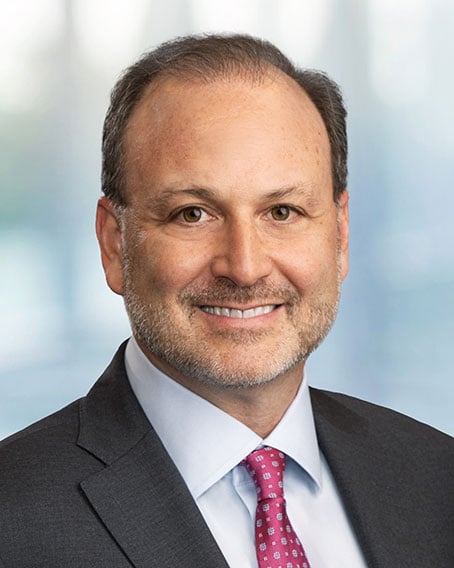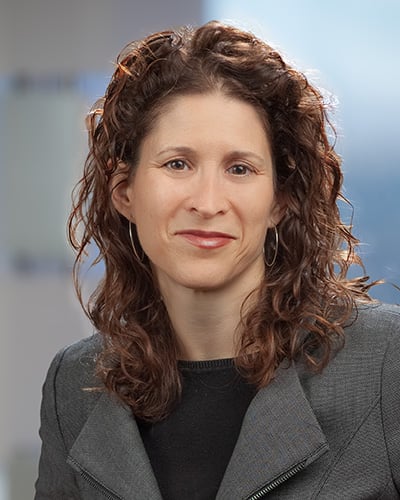Join Ropes & Gray’s life sciences and health care attorneys on a four-part podcast series exploring regulatory, compliance and enforcement changes emanating from Washington, D.C. and the potential impact on life sciences companies in 2023. This fourth episode will feature a lightning round where we cover additional insights on expected developments not covered earlier in the series. Topics discussed include anticipated guidance on drug compounding, advertising and promotion, the redesign of the Human Foods Program, and more.
Transcript:
Greg Levine: Hello, and welcome to our 2023 U.S. life sciences regulatory outlook podcast series. I’m Greg Levine, head of the life sciences regulatory and compliance practice group at Ropes & Gray, based in Washington, D.C. Earlier this month, I sat down with several of my colleagues from our Washington, D.C. office to discuss our expectations for the coming year. I was joined by Kellie Combs, Josh Oyster, and Beth Weinman, from our life sciences regulatory and compliance practice group, and Margaux Hall, from our health care practice group. We had a robust discussion that we are releasing as a four-part podcast series. What you’ll be listening to today is part four of that conversation, which was our lightning round covering a variety of topics, such as anticipated guidance on drug compounding, advertising and promotion, the redesign of the Human Foods (regulatory) Program, and more.
Last but not least, we’re going to do a lightning round. We’re going to go around the group and see what additional thoughts people have on their minds for developments to expect in 2023. Why don’t we throw it out to the group—who would like to start?
Josh Oyster: I’ll start, Greg. On the policy side, there are a few other things I’m keeping my eye on this year. First, in the CDER Guidance Agenda, we saw, as has often been the case in recent years, there are a number of compounding guidances. We also saw a number of compounding specific rules on the FDA’s rulemaking agenda. It’ll be interesting to see what actually comes out this year, particularly if there’s a long-awaited guidance on the 503B prohibition on wholesaling—it’s something that the compounding industry has been looking for for a while. Separately, new to the CDER Guidance Agenda this year is a planned draft guidance on the use of alternative tools to assess manufacturing facilities named in pending applications. This guidance stems from the pandemic, where FDA was, in many cases, unable to inspect manufacturing facilities named in pending applications. And in certain situations where FDA deemed that an inspection was essential, the approval of those applications had to be held up until FDA was able to travel to the relevant location and inspect the facility. FDA did try, in many cases, to exercise flexibility and use records requests, remote regulatory assessments, and these other “alternative tools” to find a way to assess records from facilities, GMP compliance at facilities, GCP compliance at trial sites, etc., but it seems that FDA is moving towards formalizing a lot of these policies now that they’ve had some experience with them. That draft guidance could shed more light on how those alternative tools are going to be used in the context of assessing facilities that are named in NDAs and the like.
Greg Levine: Thank you, Josh. Who would like to pick it up from there?
Kellie Combs: I’ll weigh in, Greg, just for a moment. We haven’t talked yet about advertising and promotion. Certainly, enforcement on the FDA side continues to be very quiet with only a handful of OPDP letters seen last year. We’ve also seen no major guidance documents since 2018. And there is nothing of significance on the FDA guidance agendas. We have seen FDA recently take increasing interest in the use of endorsers and influencers in advertising, as well as DTC communications, so it remains to be seen whether any OPDP ongoing research studies may ultimately lead to some sort of rulemaking or further guidance development. Also, one of Commissioner Califf’s priorities, as he’s stated many times, is to combat medical misinformation. This may not directly be related to ad/promo in the traditional sense because Califf’s not necessarily talking about manufacturer communications here. But he has said, at times in the past, that medical misinformation has become a leading cause of death in the U.S., so I’m very interested to see what FDA does in that respect.
Josh Oyster: On the topic of ad/promo, I’d be remiss if I didn’t mention that we’re still waiting on a much-anticipated decision in the First Circuit in an old FDCA enforcement case related to advertising and promotion. And that’s the appeal of the criminal convictions of two former medical device executives, William Facteau and Patrick Fabian. They were convicted on misdemeanor charges at a trial six and a half years ago. That conviction was upheld two and a half years ago. They appealed. The oral argument in the First Circuit happened almost a year ago, and we still have no decision from the First Circuit. That decision is likely to have some implications for FDA regulation of speech, the First Amendment, and the interplay between what FDA can regulate and can’t regulate, so we’ll be watching that one very closely.
Greg Levine: Thank you. Beth, anything you’d like to add in on our lightning round?
Beth Weinman: I think I referred to this briefly in my prior remarks about the impact of the much-discussed redesign of the Human Foods Program. It’s hard to know for sure, but we all know that CFSAN (the Center for Foods) faced significant scrutiny in the aftermath of the infant formula shortage brought on by the shutdown of a plant and a massive recall of infant formula. And FDA was accused of acting too slowly on early complaints. FDA conducted an internal review and suggested that its slow acting was due to inadequate authorities and resources, but an external review found otherwise and suggested that the food program was plagued by leadership turnover and “constant turmoil” that led to “indecisiveness and inaction.” This led to the resignation of Frank Yiannis and the commissioner’s promise of a reorganization. So, the question is: What is that reorganization going look like?
FDA recently put out a memo with a very high-level view on its plans. It looks like there’s going to be creation of a new Center of Excellence for Nutrition with the goal of elevating and empowering action on nutrition, science, policy, and initiatives to reduce diet-related chronic disease and improve health equity. And then, within that center, there would be an Office of Critical Foods, which would manage the regulation of infant formulas and medical foods. Also, a new Office of Integrated Food Safety System Partnerships is going to be created, and that office is expected to prioritize and unify FDA’s work with state and local regulators in an effort to strengthen the nation’s integrated food safety program as envisioned under FDA’s Food Safety Modernization Act. The announcement of the reorganization of the Human Foods Program also mentioned a reorganization of ORA. Again, it’s a little unclear what that’s going to look like, but it looks like product centers (the new Center for Foods, the Center for Drugs, etc.) are going to have more of a direct role in setting the agenda—the policy, and prioritization of ORA more generally. And it looks like ORA is looking to strengthen its own internal expertise alongside and using center experts. So, I think there is going to be an attempt to align ORA and the product centers more closely.
Greg Levine: Thanks for that, Beth. Yes, it would be interesting if ORA (Office of Regulatory Affairs), which handles FDA’s field operations and inspections, will be reorganized beyond just the foods program because there was a reorganization not very long ago, and that still feels relatively new. If there will be further changes to ORA now, on top of the prior changes, I’m curious what those will be, what they’re going to mean, and if we’re going to have to relearn new acronyms and things like that as we move forward, so we will see.
Beth Weinman: The last reorganization was about creating expert cadres in certain areas, so maybe it’s just going to be more of the same.
Greg Levine: I’m not quite clear what more they would do on that because they do have those specialized cadres now, but maybe they’ll organize it differently. Thank you for that. Before we close, why don’t we talk about an interesting development from last year relating to device enforcement, where FDA dusted off some old authorities that it has and used them. Do we think that’s going to be a trend? Josh or Beth, do you want to talk about that?
Josh Oyster: Sure—I’m happy to take that, Greg. So, what you’re referring to is FDA’s action last year to issue what’s called a “notification order” under Section 518(a) of the Food, Drug, and Cosmetic Act, as well as a proposal to issue an order under Section 518(b) of the Food, Drug, and Cosmetic Act—and that 518(b) is the part of the statue that authorizes FDA to order repairs, replacements, or refunds of medical devices, whereas 518(a) involves a notification order, where FDA can order a device manufacturer to notify consignees of certain device issues. Both of these FDA actions stem from a recall by a large manufacturer of certain breathing assistance devices, and there were some significant aggravating factors with that recall that likely led FDA to take those actions, including the company’s effort to effectuate the recall and ensure that all effected consignees had been adequately notified. The FDA found evidence that those notification efforts were not up to par, and FDA also had conducted an inspection of the manufacturer and identified some concerns related to the speed at which the company was addressing the underlying issues. We’ll be playing close attention to what additional actions FDA takes, with respect to this manufacturer and with respect to its use of these device authorities more generally. These are authorities, in the case of 518(a) notification orders, that FDA had not used in, I think, 27 years. And in the case of the 518(b) authority, it’s something that FDA had never invoked, although it had been on the books for decades. So, we’ll be watching whether it was really the specific facts and circumstances of this particular situation that led FDA to invoke these authorities or whether it’s part of a broader trend that means that FDA is going to be looking to do this more often with device companies.
Greg Levine: Yes, and if we roll the clock back to before the pandemic, just more broadly with devices, there was a pretty significant focus on things that needed to be done differently, perhaps, with regard to device safety, regulation of device safety. Particularly some pre-market, but post-market, as well. And with the pandemic, it’s not that the FDA stopped enforcing the law or stopped paying attention to device safety—it didn’t—but some of those more far-reaching, or innovative, or novel types of policy proposals continued to move forward. But others seem to have gone off the radar screen. We’re now starting to see again articles in journals and so on raising questions about device safety, so I wouldn’t be surprised if not just those particular enforcement tools, but other things are happening in the device safety and device enforcement area in the upcoming period.
Thank you very much to our listeners for tuning in today. We will continue to provide additional news and analysis about regulatory developments and emerging issues from the federal government throughout 2023. You can access that information on our Capital Insights page, on our main Ropes & Gray web page, www.ropesgray.com, by listening to any of our RopesTalk podcasts—including the past episodes in this podcast series—in our podcast newsroom on our website, or by subscribing to RopesTalk wherever you listen to podcasts, including on Apple and Spotify. Thanks again for listening.
Stay Up To Date with Ropes & Gray
Ropes & Gray attorneys provide timely analysis on legal developments, court decisions and changes in legislation and regulations.
Stay in the loop with all things Ropes & Gray, and find out more about our people, culture, initiatives and everything that’s happening.
We regularly notify our clients and contacts of significant legal developments, news, webinars and teleconferences that affect their industries.







